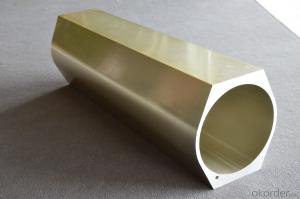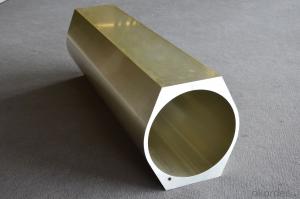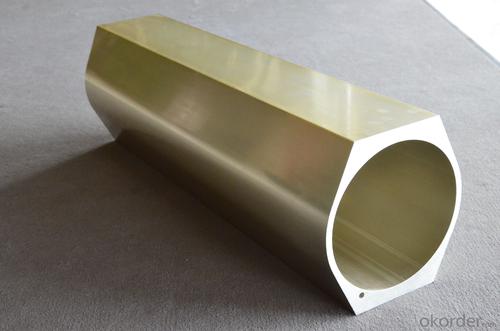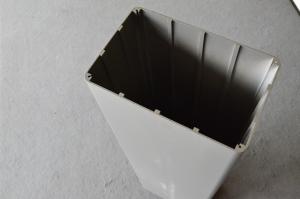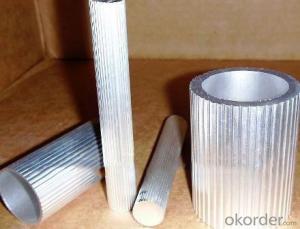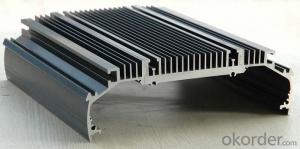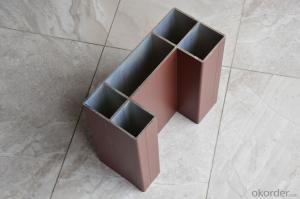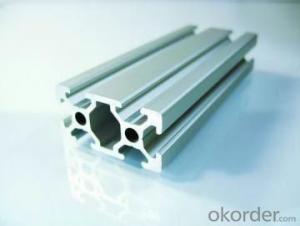Aluminum Extrusion Channel Profiles - Aluminum Profile 005
- Loading Port:
- China Main Port
- Payment Terms:
- TT OR LC
- Min Order Qty:
- -
- Supply Capability:
- -
OKorder Service Pledge
OKorder Financial Service
You Might Also Like
Aluminium Profile
1)Material : 6063 6061 6060 and different aluminium alloy
2)Status:T4 T5 T6 or other special status
3)Surface treatment: mill finish, anodized sliver ,anodized bronze, anodized champagne, anodized black pearl, various power coating color, electrostatic sliver, electrostatic champagne, electrostatic golden, electrostatic titanium , machine polish sliver, machine polish bronze, wooden grain color, and Fluorocarbon spraying.
4)Annual capacity : 120000TON
5)Quality : China Nation Standard GB/T 5237 2008 (advanced class)
6)Use: can be widely using aluminium window, door, curtain wall, hand railing , normal aluminium profile, decorative and industrial aluminium profile
7)Advantage: Famous Brand reasonable&market price, soonest delivery and good after sale- service
8)Type of package:protection foam+heat contracted plastic film. / wooden packing / Metal pallet or depand on clientspecial requirement.
9)Payment term:T/T:30% of total value as deposite should paid by T/T within 3 days when confirmation ,and the remaining sum should be paid by T/T before delivery.L/C: 100% at sight
10)Delivery Day: 15-30days
11)Honor : CHINA FAMOUS TRADEMARK, CHINA TOP BRAND, ISO9001-2000, CHINA SQUARE&ROUND COMMITTEE DNV
- Q: This question asks about the various dimensions and forms of aluminum profiles that are typically utilized in the construction of building frames.
- <p>Aluminum profiles used in building frames come in a variety of sizes and shapes to meet different structural requirements. Common profiles include rectangular tubes, square tubes, angles (L-profiles), channels, and tees. Sizes range from small (e.g., 10x10mm to 30x30mm) to large (e.g., 100x100mm to 200x200mm), with thicknesses varying from 1mm to 6mm or more. Shapes are tailored to specific applications; for example, I-beams and H-beams are used for their high strength-to-weight ratio. These profiles are chosen based on load-bearing needs, aesthetic preferences, and construction techniques.</p>
- Q: Can aluminum profiles be used in curtain wall systems?
- Yes, aluminum profiles can be commonly used in curtain wall systems. Aluminum is a lightweight, durable, and corrosion-resistant material, making it suitable for constructing curtain walls. Its versatility allows for various design options and structural support, making it a popular choice in the construction industry.
- Q: What are the different shapes available for aluminum profiles?
- Aluminum profiles come in a variety of shapes, each designed to cater to different needs and applications. Some commonly used shapes include T-Slot profiles, square profiles, rectangular profiles, round profiles, L-shaped profiles, U-shaped profiles, and custom profiles. T-Slot profiles are widely used in construction, robotics, and industrial applications due to their easy assembly and integration of other components. Square profiles provide excellent strength and rigidity, making them ideal for structural applications like building frames and support structures. Rectangular profiles offer versatility and can be used in enclosures, partitions, and conveyor systems. Round profiles are commonly utilized for applications that require a smooth and aesthetically pleasing finish, such as architectural purposes. L-shaped profiles, on the other hand, are often used for corner joints, edges, and brackets, providing structural support and stability. U-shaped profiles resemble an open channel and are frequently used to house and guide cables, wires, or other components. In addition to these standard shapes, aluminum profiles can also be custom-designed and manufactured to meet specific project requirements. This allows for greater flexibility in ensuring that the profiles perfectly fit the intended application. Overall, the availability of different shapes for aluminum profiles empowers engineers, designers, and manufacturers to choose the most suitable shape for their specific needs. This ensures optimal performance, functionality, and aesthetics.
- Q: Can aluminum profiles be used in modular construction?
- Yes, aluminum profiles can be used in modular construction. Aluminum profiles are lightweight, strong, and durable, making them an ideal choice for modular construction projects. They can be easily fabricated into various shapes and sizes, allowing for flexibility in design and construction. Additionally, aluminum profiles have excellent corrosion resistance, which is crucial for modular structures that may be exposed to harsh weather conditions. The use of aluminum profiles in modular construction also offers advantages such as reduced construction time, cost-effectiveness, and sustainability, as aluminum is a highly recyclable material. Overall, aluminum profiles provide a reliable and efficient solution for modular construction projects.
- Q: This question asks if aluminum profiles can be utilized in sustainable construction projects and seeks an explanation of their application.
- <p>Yes, aluminum profiles can be used for green building projects. They are valued for their durability, recyclability, and energy efficiency. Aluminum profiles are lightweight, which reduces the load on structures and can contribute to energy savings in heating and cooling. They also have high thermal conductivity, which can be beneficial for heat transfer in building systems. Additionally, aluminum is 100% recyclable, meaning it can be repurposed without losing its properties, reducing waste and the need for new raw materials. This recyclability aligns with the principles of sustainable construction by promoting a circular economy and reducing the environmental impact of building materials.</p>
- Q: Can aluminum profiles be used in modular exhibition system manufacturing?
- Yes, aluminum profiles can be used in modular exhibition system manufacturing. Aluminum profiles are known for their lightweight and durable properties, making them ideal for constructing modular exhibition systems. They are easy to handle and assemble, allowing for quick and efficient installation and dismantling of exhibition booths. Additionally, aluminum profiles can be easily customized and reconfigured to meet specific design requirements, making them a versatile choice for modular exhibition system manufacturing.
- Q: How do you attach accessories or components to aluminum profiles?
- Attaching accessories or components to aluminum profiles can be done in multiple ways. One commonly used technique involves the use of T-slot nuts and bolts. T-slot nuts can easily slide into the T-slot groove on the profile and can be placed at any desired location along its length. Subsequently, the bolts are utilized to firmly secure the accessory or component to the nut, establishing a sturdy and dependable connection. Another alternative is to employ brackets or mounting plates that are specifically designed for aluminum profiles. These brackets generally possess pre-drilled holes that align perfectly with the T-slot grooves, allowing for effortless attachment of accessories. They can be fastened to the profile using screws or bolts. Furthermore, there are various specialized connectors available for specific applications. Examples of these connectors include corner connectors, joining plates, and hinge connectors. These connectors offer convenient and reliable methods to attach accessories or components to aluminum profiles without the necessity of additional drilling or machining. When selecting the attachment method, it is crucial to consider the weight and load-bearing requirements of the accessories or components. Utilizing suitable fasteners and connectors guarantees a secure attachment, preventing any potential hazards.
- Q: This question asks for a list of various fastening methods or components used to attach aluminum profiles in roofing systems.
- <p>In roofing systems, various types of fasteners are used to secure aluminum profiles, ensuring stability and longevity. Some common fasteners include: 1. Self-tapping screws, which thread directly into the aluminum without pre-drilling. 2. Rivets, which join two pieces of aluminum by compressing them together. 3. Nuts and bolts, used in conjunction with pre-drilled holes for a secure fit. 4. Clamps, which hold profiles together without penetrating the material. 5. Adhesives, used for bonding profiles in situations where mechanical fasteners are not suitable. 6. Clips and brackets, which can be used to attach profiles to other structural elements. Each type of fastener has its specific application and is chosen based on the design requirements and environmental conditions of the roofing system.</p>
- Q: This question asks about the impact of aluminum profiles on the longevity and strength of a building structure.
- <p>Aluminum profiles significantly enhance the durability of a building due to their high strength-to-weight ratio, excellent resistance to corrosion, and low maintenance requirements. They are lightweight yet strong, making them ideal for load-bearing structures and facades. Corrosion resistance means they withstand harsh weather conditions without rusting, which is common in steel profiles. This durability extends the building's lifespan and reduces the need for frequent repairs or replacements, thereby providing a cost-effective long-term solution. Additionally, aluminum profiles can be easily recycled, contributing to sustainable construction practices.</p>
- Q: Is it feasible to recycle aluminum profiles and what factors affect the recycling process?
- <p>Yes, aluminum profiles can be recycled easily. Aluminum is one of the most recycled materials globally due to its low melting point, which requires less energy for recycling compared to other metals. The recycling process involves melting the aluminum, which can be done at temperatures significantly lower than those needed for other metals. Additionally, aluminum retains its properties even after multiple recycling cycles, making it an ideal material for sustainable use. The recycling rate of aluminum is high, and it contributes to energy savings and reduced environmental impact. However, the ease of recycling can be affected by factors such as the presence of impurities, the complexity of the profile shapes, and the efficiency of collection systems.</p>
Send your message to us
Aluminum Extrusion Channel Profiles - Aluminum Profile 005
- Loading Port:
- China Main Port
- Payment Terms:
- TT OR LC
- Min Order Qty:
- -
- Supply Capability:
- -
OKorder Service Pledge
OKorder Financial Service
Similar products
Hot products
Hot Searches
Related keywords
